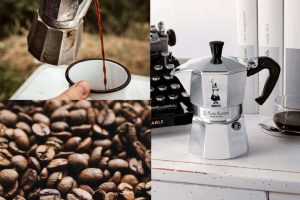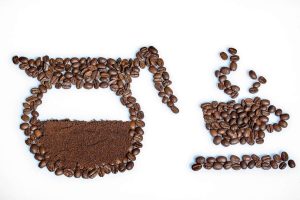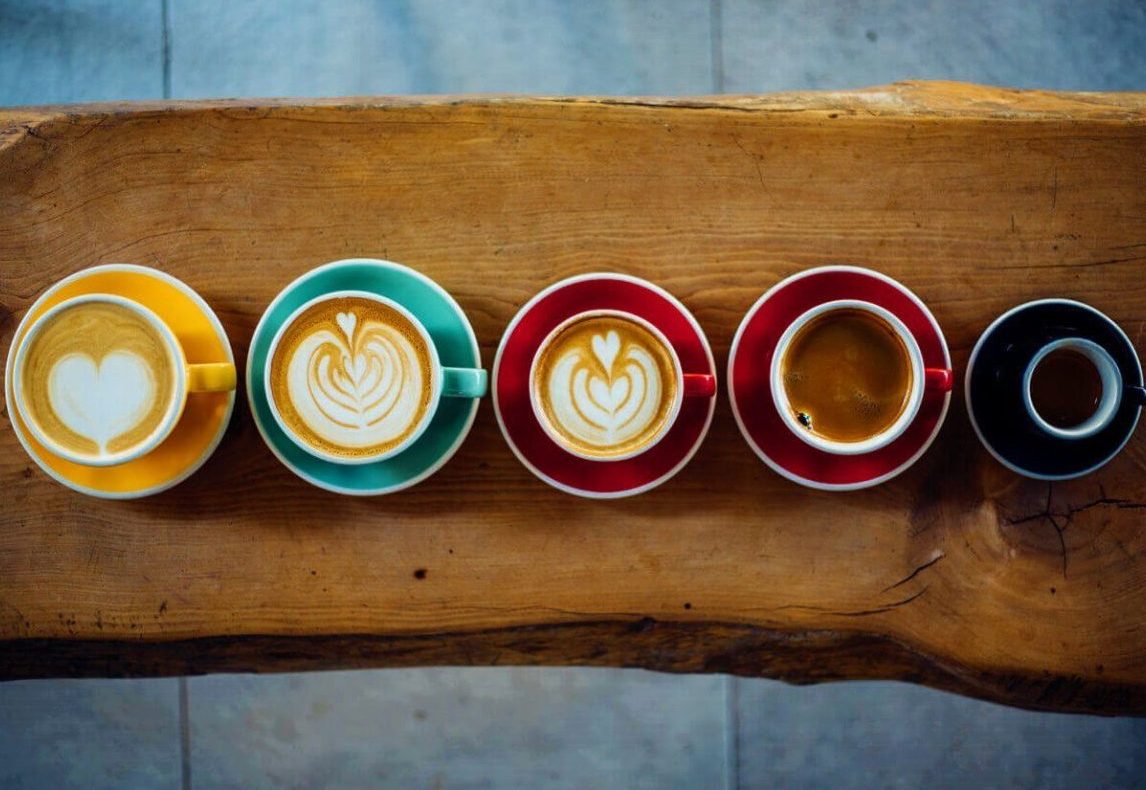How Do You Make the Best Pot / Cup of Coffee: In the world of caffeinated delights, the task of the perfect cup of coffee is an art, a science, and a profoundly personal journey. Whether an early riser seeking that invigorating morning boost or an afternoon connoisseur reveling in a respite, brewing the best pot or cup of coffee is a ritual worth perfecting.
This article guides the aromatic realms of coffee-making mastery. This journey transcends the mundane and taps into the nuances that transform a simple beverage into a rich, flavorful experience.
From selecting the finest beans to mastering the brewing techniques, join us as we unlock the secrets to creating that sublime elixir that awakens the senses and elevates the ordinary into the extraordinary.
Whether you’re an experienced coffee enthusiast or just starting to discover the world of coffee, this guide is your passport to brewing excellence and savoring every drop of that perfect cup.
Make the Best Pot / Cup of Coffee?
Let’s discover the alchemy of making the best pot or cup of coffee—your way.

How to Choose the Best Coffee Beans?
Choosing the best coffee beans is crucial in crafting a cup of coffee that delights the senses. The world of coffee offers many beans with diverse flavors, aromas, and characteristics. Whether you’re a seasoned coffee connoisseur or a casual coffee lover, here’s a guide to help you select the best coffee beans for your preferences.

1. Know Your Coffee Bean Types:
- Coffee beans come in two primary varieties: Arabica and Robusta. Arabica beans are known for their nuanced flavors, higher acidity, and aromatic qualities. Robusta beans, on the other hand, are bolder, have more caffeine, and often carry a stronger, more bitter taste. Understanding the differences between these varieties will guide your selection.
2. Consider the Bean’s Origin:
- The area where coffee is grown significantly affects its flavor profile. Coffees from different countries or regions exhibit unique characteristics influenced by climate, altitude, and soil. Experiment with beans from various origins to discover your preferred taste.
3. Check the Roast Level:
- Coffee beans are typically roasted to varying degrees, influencing their flavor and aroma. Light roasts retain more of the bean’s natural flavors and acidity, while dark roasts develop rich, bold flavors with lower acidity. Choose a roast level that aligns with your taste preferences.
4. Freshness Matters:
- Freshly roasted coffee beans offer the best flavor. Look for beans with a roast date to ensure they are as fresh as possible. Coffee begins to lose its taste and aroma over time, so aim to use your beans within a few weeks of roasting.
5. Consider the Processing Method:
- Coffee beans undergo different processing methods, such as washed, natural, or honey. These methods impact the flavor and body of the coffee. For example, washed beans often result in cleaner and brighter flavors, while natural processed beans can have fruitier and more complex profiles.
6. Evaluate the Bean’s Grade:
- Some coffee beans are graded based on size, shape, and quality. While these grades can provide insights into the bean’s characteristics, personal preference plays a significant role. Experiment with different grades to find what suits your taste.
7. Explore Single-Origin vs. Blends:
- Single-origin coffees come from a specific geographic region, highlighting the unique characteristics of that area. On the other hand, coffee blends combine beans from various regions to create a balanced and complex flavor. Decide whether you prefer the distinctiveness of single-origin or the harmony of blends.
In your quest for the best coffee beans, embrace the adventure of tasting and discovering new flavors. Each coffee bean is a journey in a cup, offering a world of aromas and nuances waiting to be explored.
Adjust your choices based on your brewing method, whether espresso, pour-over, French press, or any other method that suits your taste preferences. Ultimately, the best coffee beans are the ones that bring joy to your palate and enhance your coffee-drinking experience.
How to Store Coffee Beans?
Proper storage is crucial to maintaining the freshness and flavor of your coffee beans. Coffee is sensitive to its environment; air, light, moisture, and temperature can impact its quality. To confirm that your coffee beans retain their optimal flavor profile, follow these guidelines for storing them:
1. Use an Airtight Container:
- Transfer your coffee beans from the original packaging to a sealed container with a sealable lid. A container that locks out air will help preserve the beans’ freshness by preventing oxidation.
2. Choose a Dark and Cool Location:
- Store the sealed bottle in a cool, dark place, away from direct sunlight and heat. Exposure to light and high temperatures can accelerate the breakdown of coffee oils and compromise the flavor.
3. Avoid moisture:
- Keep coffee beans away from moisture, as dampness can lead to mold growing and deterioration of the beans. Do not store coffee in the refrigerator, as the beans can absorb unwanted odors and flavors.
4. Limit Air Exposure:
- The beans are exposed to air every time the coffee container is opened. Minimize air exposure by closing the container tightly after each use. Consider dividing your coffee supply into smaller portions and only opening one portion at a time to maintain freshness.
5. Store Whole Beans:
- It’s best to purchase whole coffee beans and grind them before brewing. Whole beans have a longer shelf life than pre-ground coffee because grinding exposes a larger surface area to air, hastening the loss of flavor.
6. Use Opaque Containers:
- If your airtight container is not opaque, store it in a dark cupboard or place it inside a pantry. Opaque containers prevent light from reaching the beans, preserving their quality.
7. Avoid Fluctuating Temperatures:
- Coffee beans should be stored in a location with a consistent temperature. Avoid exposing them to frequent temperature changes, which can cause condensation inside the container, leading to spoilage.
8. Monitor Roast Date:
- Keep track of the roast date of your coffee beans. Freshness is key to great coffee; using beans within two to four weeks of roasting ensures the best flavor. Consider buying coffee in smaller quantities to maintain a steady supply of fresh beans.
By following these storage practices, you can prolong the cleanness and taste of your coffee beans, ensuring that each cup you brew is a delightful and aromatic experience.
Brewing the Coffee:

Brewing coffee makes a delicious cup of this beloved beverage by extracting flavors from coffee grounds. It involves a few simple steps that, when done right, result in a flavorful and aromatic cup. Let’s break down the brewing process in straightforward terms:
1. Measure the Coffee:
- Start by measuring your coffee grounds. The ratio of coffee to water is essential for a balanced brew. A standard ratio is one to two tablespoons of coffee for every six ounces of water. Adjust according to your taste preferences.
2. Choose Your Grind:
- The grind size of your coffee beans influences the extraction process. Medium grind is suitable for most brewing methods, like drip coffee makers. For methods like espresso, go for a fine grind. Coarser grinds are ideal for methods like the French press.
3. Heat the Water:
- Boil fresh, filtered water. The temperature matters; aim for around 195 to 205 degrees Fahrenheit. Avoid boiling water for too long, as it can affect the taste.
4. Preheat Your Equipment:
- If using a coffee maker or pour-over device, preheat it by rinsing it with hot water. This ensures that your coffee brews at the right temperature from the beginning.
5. Add Coffee Grounds:
- Place the measured coffee grounds into your coffee maker or filter. Ensure an even distribution for a consistent flavor.
6. Pour the Water:
- Once the water reaches the right temperature, pour it evenly over the coffee grounds. Use a circular motion for even saturation. The coffee will “bloom,” releasing trapped gases and enhancing flavors.
7. Brewing Time:
- Allow the coffee to brew for the recommended time. This varies depending on the brewing method. For example, drip coffee makers usually take a few minutes, while French press might require a longer steeping time.
8. Filter or Press:
- If using a method with a filter, like a drip coffee maker, let the machine do its job. If you’re using a French press, press down the plunger slowly to separate the grounds from the brewed coffee.
9. Serve and Enjoy:
- Pour your prepared coffee into your favorite mug. Add any desired extras like milk or sugar. Take a moment to inhale the inviting aroma before savoring each sip.
Remember, making coffee is both an art and a science. Experiment with different ratios, grind sizes, and brewing methods to find the best combination that suits your taste buds. The key is to enjoy the process and relish the delightful outcome –freshly brewed coffee made just as you like it.
Cleaning Your Equipment:
Cleaning your coffee equipment is crucial for maintaining the quality of your brews and ensuring a long lifespan for your tools. Here’s a simple guide to help you keep your coffee gear spick and span:
1. Daily Rinse:
- After each use, give your coffee equipment a quick rinse with hot water. This helps remove leftover coffee oils and grounds, preventing them from accumulating and affecting the flavor of future brews.
2. Clean the Coffee Pot:
- If you use a coffee pot or carafe, wash it with warm, soapy water. Ensure you get into all the nooks and crannies. If there are stubborn coffee stains, a blend of water and baking soda can be used for scrubbing.
3. Wash Removable Parts:
- Disassemble devices with removable parts, like a French press or pour-over cone, and wash each part separately. Pay special attention to filters, screens, and plungers.
4. Descale Your Coffee Maker:
- If you have a coffee maker with a water reservoir, it’s essential to descale it regularly. Calcium deposits from water can build up and affect the performance of your machine. Follow the manufacturer’s instructions for using a cleaning solution.
5. Clean the Grinder:
- If you have a coffee grinder, clean it regularly to prevent the buildup of coffee oils and residue. Unplug electric grinders before cleaning. Use a brush to wipe away any leftover grounds.
6. Check Your Filters:
- If you’re using reusable filters, inspect them for any leftover coffee grounds. Rinse them thoroughly and let them air dry. If you have paper filters, make sure to replace them regularly.
7. Deep Clean Periodically:
- Depending on your usage, perform a more thorough cleaning at least once a month. This can involve using a coffee maker cleaning solution for drip machines or soaking removable parts in vinegar.
8. Empty Drip Trays:
- If your coffee maker has a drip tray, empty it regularly. A buildup of water and coffee residue in the drip tray can lead to mold and affect the cleanliness of your machine.
9. Store Equipment Properly:
- Store your coffee equipment in a clean, dry place when not in use. Ensure all parts are arid before assembly or storage to prevent mold or mildew.
10. Be Mindful of Smells:
- If you notice any unusual odors in your coffee maker or grinder, it’s a sign that they need a thorough cleaning. Unpleasant smells can affect the taste of your coffee.
By incorporating these simple cleaning practices into your routine, you’ll maintain the quality of your coffee and extend the life of your coffee equipment. A clean coffee setup ensures that every brew is as delightful as the first.
The Secret of Great Tasting Coffee:

Unlocking the secret to great-tasting coffee goes beyond the beans and the brewing method—it involves a combination of factors that contribute to a rich and flavorful cup. Here’s a guide to discovering the secrets that will elevate your coffee experience:
1. Freshness Matters:
- The freshness of your coffee beans is paramount. Opt for recently roasted beans and grind them just before brewing. Coffee starts losing its flavor and aroma shortly after grinding, so aim to use the grounds within a few minutes.
2. Quality Coffee Beans:
- Begin with high-quality coffee beans. Explore different origins, roasts, and varieties to find the beans that align with your taste preferences. Consider single-origin beans for a more distinct flavor profile.
3. Grind Size and Consistency:
- The grind extent of your coffee beans is crucial. Different brewing methods require different grind sizes. For instance, use a coarse grind for the French press and a good grind for espresso. Consistency in grind size ensures an even extraction.
4. Proper Water Temperature:
- Brewing coffee at the right temperature is essential. Aim for water between 195 to 205 degrees Fahrenheit (90 to 96 degrees Celsius). Too hot or too cold water can result in under-extraction or over-extraction, impacting the flavor.
5. Correct Coffee-to-Water Ratio:
- Finding the right balance between coffee and water is key. Adjust the ratio based on your taste favorites, but a general guideline is one to two tablespoons of coffee per six ounces of water.
6. Clean Equipment:
- Regularly clean your coffee equipment, including the grinder, brewer, and accessories. Residual oils and coffee grounds can accumulate and affect the flavor of your coffee.
7. Experiment with Brew Time:
- The brewing time can significantly influence the flavor. Adjust the time to find the sweet spot for your preferred strength and taste.
8. Mindful Brewing Methods:
- Different brewing methods extract flavors differently. Whether you prefer pour-over, French press, espresso, or drip, understand the nuances of each method to maximize the potential of your coffee beans.
9. Use Filtered Water:
- The quality of your water matters. Use filtered or bottled water to avoid impurities and undesirable flavors that can affect the taste of your coffee.
10. Store Coffee Properly:
- Store your coffee beans in an airtight container in a cool, dark place. Avoid the refrigerator or freezer, as coffee can absorb odors. Use the beans within two to four weeks of roasting for optimal freshness.
11. Embrace consistency:
- Once you find your ideal coffee-making routine, try to maintain consistency. Consistency leads to predictability, ensuring you can consistently replicate that perfect cup.
The secret to great-tasting coffee lies in the delicate balance of these elements. Experiment, take note of your preferences, and enjoy the journey of discovering the nuances that make your coffee genuinely exceptional. Remember, the perfect cup of coffee reflects your unique taste and the thoughtful consideration you put into every step of the process.
Conclusion:
In conclusion, How Do You Make the Best Pot / Cup of Coffee is a personal and rewarding endeavor combining art, science, and individuality. From selecting the finest coffee beans to mastering the intricacies of brewing methods, the journey to perfection is as diverse as the flavors in the coffee world.
Key takeaways include understanding the importance of fresh, quality beans, considering grind size and brewing methods, and being mindful of water temperature and cleanliness. Experimentation is encouraged—tweak ratios, explore different origins, and embrace the versatility of brewing techniques to tailor each cup to your taste preferences.
Remember to savor the process as much as the final sip. The best cup of coffee is about the destination and the aromatic journey unfolding with each thoughtful step. So, whether you’re a seasoned coffee lover or a novice eager to explore the depths of coffee culture, may each brew bring you joy, satisfaction, and the comforting embrace of your perfect cup of coffee. Happy brewing!

